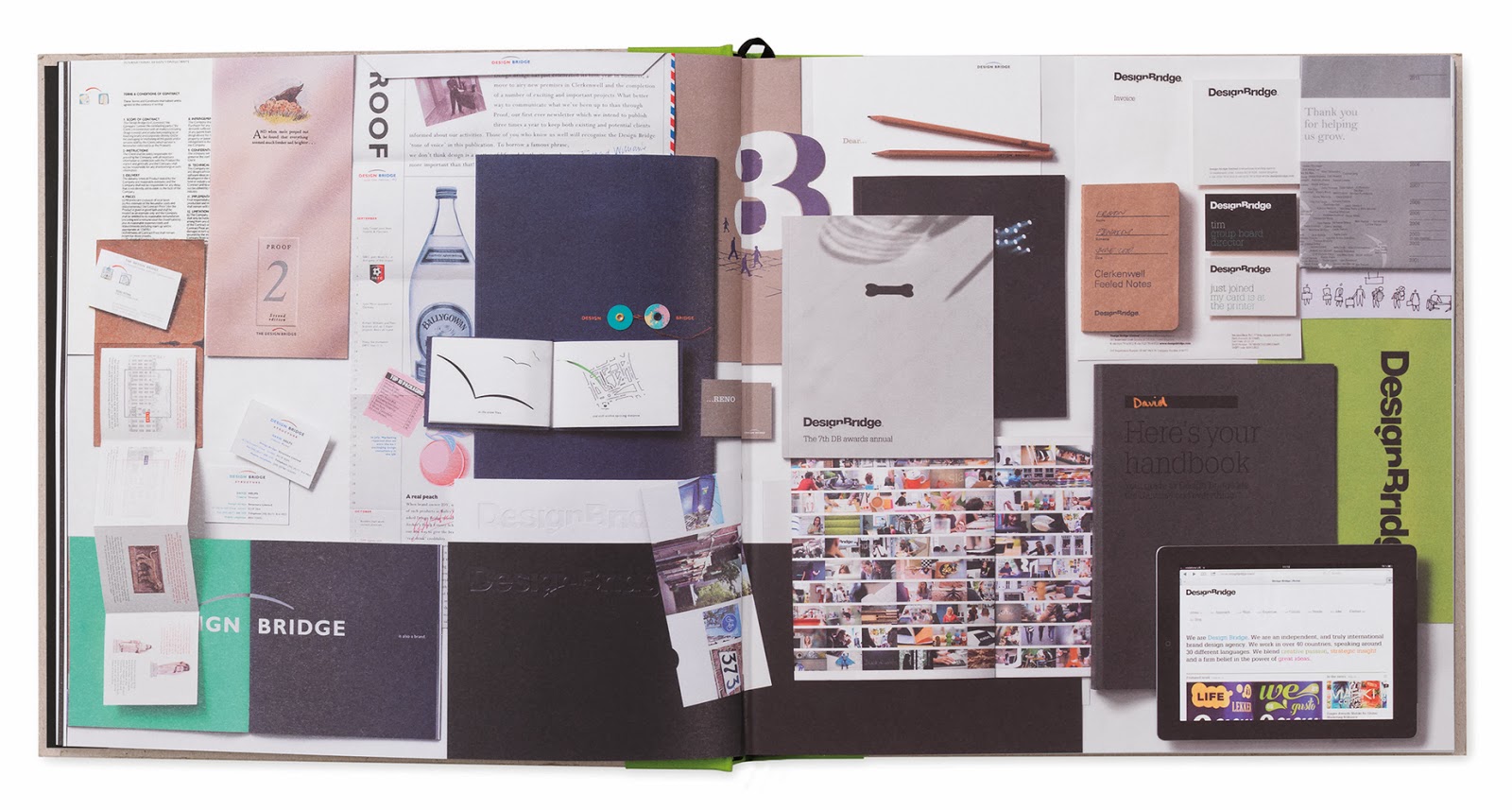The book is a casebound (hardback) book, which is "Quarter bound" (that is the way to describe the bookcloth which wraps around the spine). Size of the publication is 280x220mm, portrait and has a 64pp text. The cover paper is printed CMYK on Omnia 150gsm and is hot foil blocked in matt grey foil with a Colorado cloth in grey around the spine. The text is also printed on Omnia throughout.
The slightly unusual thing to mention about the text is that it is sewn in sections, but each section is made up using 12pp of Omnia 150gsm with a 4pp section on 200gsm wrapped around the 12pp, making a 16pp section in total. The purpose of the heavier 4pp weight is to provide "divider" sections, on which colour palette is printed. The other thing to add is the 200gsm pages are printed CMYK plus a gloss UV varnish over the colour palette areas (below)
Omnia was chosen for this project because the nature of the stone surfaces required a tactile material, without any loss of detail in the reproduction. As you can see from these pictures, there's loads of ink going down and it looks great on the Omnia, reproducing bright vibrant colours as well and keeping all the detail in the darker images, especially the smaller detail shots below ...and of course, Omnia is one of the very few papers with an uncoated look and feel that you can successfully use with UV varnish in one pass and get a great result.
This is an exquisitely produced piece of literature, the design, photography, print and binding being of the highest quality.
The research, editing and design is by FranklinTill. Creative directors are Kate Franklin and Caroline Till and the designers on the project are Laura Gordon and Graham Tait.
The superb print is by Push, handled by Danny Kirk.
Posted by Justin Hobson 28.03.2014






































